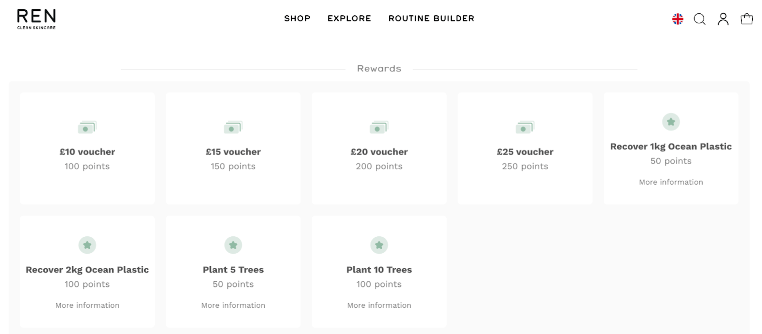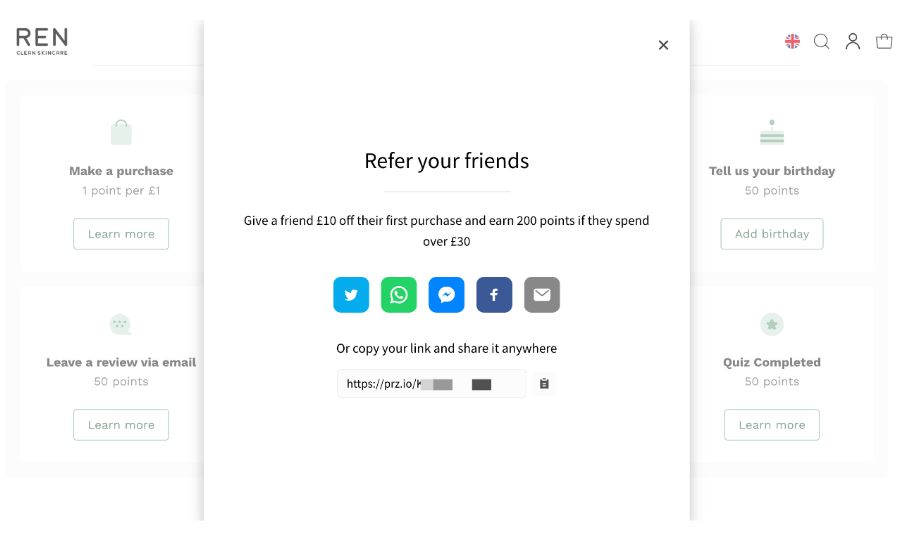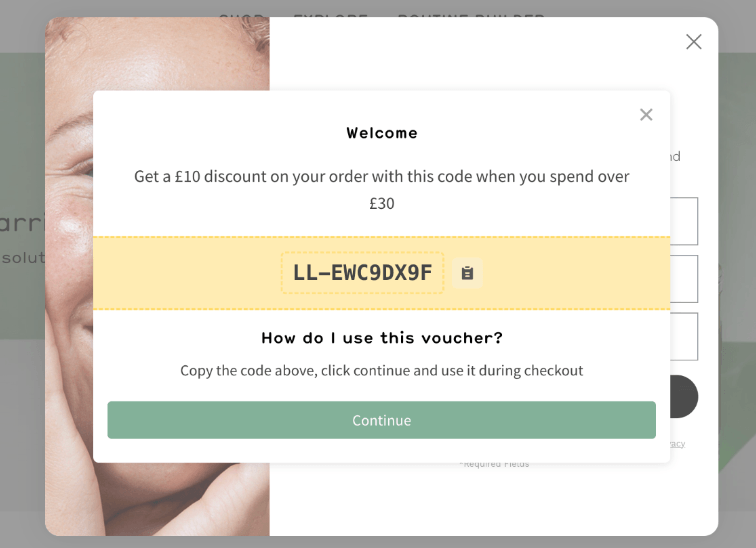A few years ago, a friend on Facebook shared a referral link to a FinTech product she’d been using for a while. As someone who also enjoys FinTech products, her post caught my attention.
The product was an AI chatbot budgeting app (before ChatGPT was a thing). The product itself was interesting, sure, but what my friend had to say about it was the most convincing factor for me to try out this budgeting app.
She said that by using the app, she’d saved more money than she ever had in her life without really noticing it. On top of that, she’d also made some money from its referral program (cash rewards are common in FinTech referrals).
There are several other types of products I’ve bought based on recommendations from friends and family in my life, and it’s likely you’ve done the same — which is the essence of referral loyalty programs.
For businesses, this type of brand loyalty is a win-win — your customers act as brand advocates, increasing brand awareness, all while bringing in new customers.
It’s also a pretty common practice — almost half (48%) of customers show their loyalty to a brand by joining its loyalty program, and a little over half (52%) do so by recommending the brand to family and friends.
In this guide, we’ll show you the power of referral loyalty programs and how to harness this power within your ecommerce business.
Demystifying referral loyalty programs
First of all, what exactly is a referral loyalty program?
Simply put, a referral loyalty program is a marketing strategy brands use to reward customers who recommend their products/services to friends and family (or an otherwise wider network).
But let’s dive into that statement with a little more detail.
Most of the time, referrals are an element of a wider loyalty program that involves rewarding customers for brand activities, such as engaging with the brand on social media, reviewing products, and purchasing products over a specific value.
The key difference between referrals and the other aspects of loyalty programs, however, is that referrals help your brand acquire new customers, while other activities help to increase customer retention.
As such, while a rewards system for social brand engagement and repeat purchases sits within your customer retention strategy, a great referral program also forms part of your customer acquisition strategy.
How referral loyalty programs work
You will have a basic idea of how loyalty programs work from the little anecdote in the introduction. However, here’s how and why they work.
Let’s say your brand is a D2C apparel ecommerce store. You’ve integrated a loyalty program solution, so when customers buy your products, they earn points that can be redeemed in exchange for rewards – both financial and experiential. However, customers can get even more points if they refer a friend using a link that’s unique to them.
Customer A, let’s call her Emma, already loves your products, but then she hears she can earn rewards by telling her friends about your brand (and her friend will get a welcome bonus too!). She sends her bestie (Customer B, let’s call her Sophie) the link so they can shop for clothes together.
Before long, Sophie also joins in and sends her referral link to a few of her other friends that Emma might not know well. The cycle then repeats.
Granted, not every person who receives a referral link is going to refer other people — but the knock-on effect is powerful enough that, through little effort on your part, you can gain new customers at an exponential rate.
Examples of successful loyalty referral programs
So, you understand what a referral program does, in theory, but how does it look in practice? Let’s take a look at some examples of brands that have implemented this strategy and how it impacted their businesses.
Galen Leather
Yusuf Perens, owner of Galen Leather, a seller of handmade leather goods and stationery, speaks very positively about their loyalty program. Here’s what he has to say:
“At Galen Leather, our loyalty program is much more than just earning purchase rewards. It’s a key part of our growth as a small business. It has helped us succeed well past 7-figure annual revenue.”
Moreover, he shares the real-world impact of having a referral program included in their overall loyalty strategy:
“Redeemed Customers: We’ve had 2,072 customers redeem points for a 5% discount through our friend referral program, which has been instrumental in driving new customer acquisition. Sales Influence: The program has generated over $350,000 in sales involving referral program discount codes, underscoring its significant contribution to our revenue.”
Perfect Locks
Priyanka Swamy, CEO of Perfect Locks, makers of human hair extensions, also integrated a loyalty program into their business, which included a referral program of “give $40, get $40” (store credit).
Here’s what Priyanka has to say about the impact these programs have had on the business:
“We saw a 20% increase in CLV, a 15% increase in AOV, and a 30% increase in repeat purchases. Not only did this solidify our customer base, but it also improved the overall brand experience.”
These real-world case studies of referral loyalty programs show just how powerful the strategy can be.
Unlocking the power of referral loyalty programs
As you can see from the case studies above, referral programs can be crucial to a business’s success — but you might argue that we could have cherry-picked case studies to prove a point. So, let’s look at some industry-wide data that demonstrate the benefits of referral programs and their impact on business metrics.
Customer acquisition
– 82% of US consumers say they seek recommendations from friends and family when considering a purchase.
– Two-thirds of US consumers say they’re a little more likely to purchase a product after a friend or family shares it via social media or email.
Customer retention
– Over a quarter (27%) of D2C shoppers cite loyalty programs, which often have referral programs built-in, as a leading factor for shopping directly with a brand.
– People who receive personalized offers (via a referral program) have a 4.5x average annual spend compared to offers that aren’t personalized.
Customer lifetime value (CLV)
– Customers acquired via referrals have a 37% higher retention rate and a 16% higher CLV (customer lifetime value).
Brand advocacy
– Joining a loyalty program and sharing it via referrals to express loyalty to a brand is common among all generations of shoppers: 49% of Gen X and Millenials, followed by 48% of Gen Z and 44% of Baby Boomers, each following this behavior.
These statistics and research insights show that the positive case studies we highlighted aren’t an exception — but that doesn’t make referral loyalty programs a magic money-making pill. You still need to put in the work to create a successful referral program. However, you can check out the potential referral revenue your existing customers could drive using LoyaltyLion’s handy ROI calculator.
Creating a successful referral loyalty program
In this section, we’ll take you through why incorporating referrals into a loyalty program is so much more impactful than a standalone referral initiative. We’ll also explain how a loyalty program works in more specific detail (i.e. how it works in LoyaltyLion), choosing the right program, selecting appropriate rewards, and tracking the program performance.
Referral program step-by-step
Using LoyaltyLion referrals as our example, here’s how referral programs work.
Step 1: Sign up/install referral program
If you host your ecommerce store on Shopify, all you need to do after creating a LoyaltyLion account is install the app block to integrate the loyalty program within your store.
Step 2: Customize your loyalty panel
Whether you use the Shopify app or the SDK, you can customize the loyalty program to suit your business’s needs.
Step 3: Launch the program
Once you’ve configured the program to how you want it, you can launch it on your site, ready for customers to join. When they do, they’ll either see a dedicated rewards page or an integrated widget (depending on how you choose to set up the customer-facing UI):

Step 3a: Customers refer a friend
After clicking on “Refer a friend,” customers will see different channels where they can share a pre-populated message that includes the unique referral link, or they can choose to copy the link to paste it anywhere they want.

Step 3b: Referee uses code
When the friend clicks on the referral link, they’ll be directed to the store with an automated pop-up that shows the discount code they can use to shop with.
Depending on how you’ve configured your program, as well as getting the copyable code, customers can click “apply code” to automatically apply the code to the checkout.
From there, the customer can redeem the referral offer. Just like that, you’ve got a new customer.

Choosing the right referral program
There are plenty of referral program platforms available, so how do you narrow down which one is right for your business? The best way is to list your ranking criteria and then score each tool you compare against those criteria. Here are some examples:
– Ease of use for customers. The top priority for any business looking to set up a referral program should be how easy it is for customers to use. If the program is overly complex to use or hard to find, your customers simply won’t use it, which becomes a waste of time and effort on your part.
– Ease of set up. The next highest priority should be how easy it is for you to actually set up the program. For example, you can set up LoyaltyLion in just a few clicks if your store uses the Shopify platform. In other cases, you might find that you’ll need some web development help to integrate a program.
– Available integrations. It’s quite unlikely your loyalty referral program will exist in a silo — at a minimum, you’ll want to have an integration for your email service provider to send email sequences to your program members.
In other cases, you might need a few more loyalty program integrations to complete your tech stack. Whichever the case, make sure you check the tool’s list of integrations to help you narrow your choices.
– Analytic capabilities. Every loyalty and referral program software available will have (or should have) some kind of analytics dashboard. Otherwise, how do you know if it’s working?
However, since every tool has them, the best way to score this criterion would be based on how complex you need the analytics and reporting to be. The best of both worlds (as the saying goes) is a platform that can provide a simplified dashboard to get a quick overview of performance but also gives you the option to dive into more granular data for in-depth reporting.
– Extended loyalty capabilities. Lots of brands begin investigating referrals as a cost-effective way of acquiring new customers.
While it is possible to only launch a referral initiative, it’s not the most effective way of driving a return on your investment. Working with a referral platform that also has loyalty functionality and features gives you far more scope to expand your referral campaigns into broader loyalty initiatives over time. In turn this helps you to retain those newly referred customers for longer, and further increase their CLV.
Selecting appropriate rewards
Deciding what rewards to give customers who join your loyalty program and refer friends and family isn’t a case of one-size-fits-all. What works for one business might not work for yours since they’d likely have different profit margins to work with.
Instead, it’s a good idea to conduct some customer research to find out what they’d feel would be a good value reward for the referral, then compare that data to what your business can reasonably sustain.
In terms of points for financial incentives, we’d recommend setting up a redeemable maximum of 5%. We’ve detailed this point in one of our help guides.
You should also consider what type of reward makes sense for your business. For example, if you sell small, frequently bought goods, a points-based system for referrals makes sense. However, if you sell subscriptions, a better approach would be to offer a discount on a set number of future subscription orders (HelloFresh is a great example of this method in action).
Tracking performance and data-driven decision-making
Remember how we mentioned analytics were an important criterion for choosing your referral program software? Well, to make better, data-driven decisions for your business, you need to be able to track your program’s performance.
Some high-level metrics, like revenue from referrals and points earned/spent, can give you an idea of how your program is performing. But when you’re making decisions, like whether or not to change your referral reward, it’s best to dig a little deeper into your program data.
For example, if your “visits from referrals” metric is lower than you’d like it to be, that can indicate that the referral reward offer isn’t compelling enough for your customers to share it with friends.
Another important metric to consider is the source of your referrals. If you get more referral traffic from Facebook, Twitter, or Direct Email, it’s a great indicator of where your next marketing campaign should be.
LoyaltyLion: Your partner in referral loyalty success
To summarize, a referral loyalty program is a powerful tool your business can use to develop more valuable relationships with your customers — they get rewards for referring friends and family, while your business benefits from new customers at a significantly reduced acquisition cost.
However, a successful referral loyalty program starts with your choice of platform.
LoyaltyLion is a leading loyalty program provider with built-in referral solutions for Shopify ecommerce brands.
The LoyaltyLion platform has everything you need to acquire new customers via referrals from existing ones. However, it can also help you retain all those new customers that get referred with features like loyalty emails, tiers, in-cart rewards, referrals, and an easy-to-use analytics dashboard. Our solution has a track record of helping businesses increase revenue, brand awareness, and customer engagement.
If you want to learn more about how LoyaltyLion can help you reach more valuable customers, book a demo today.





